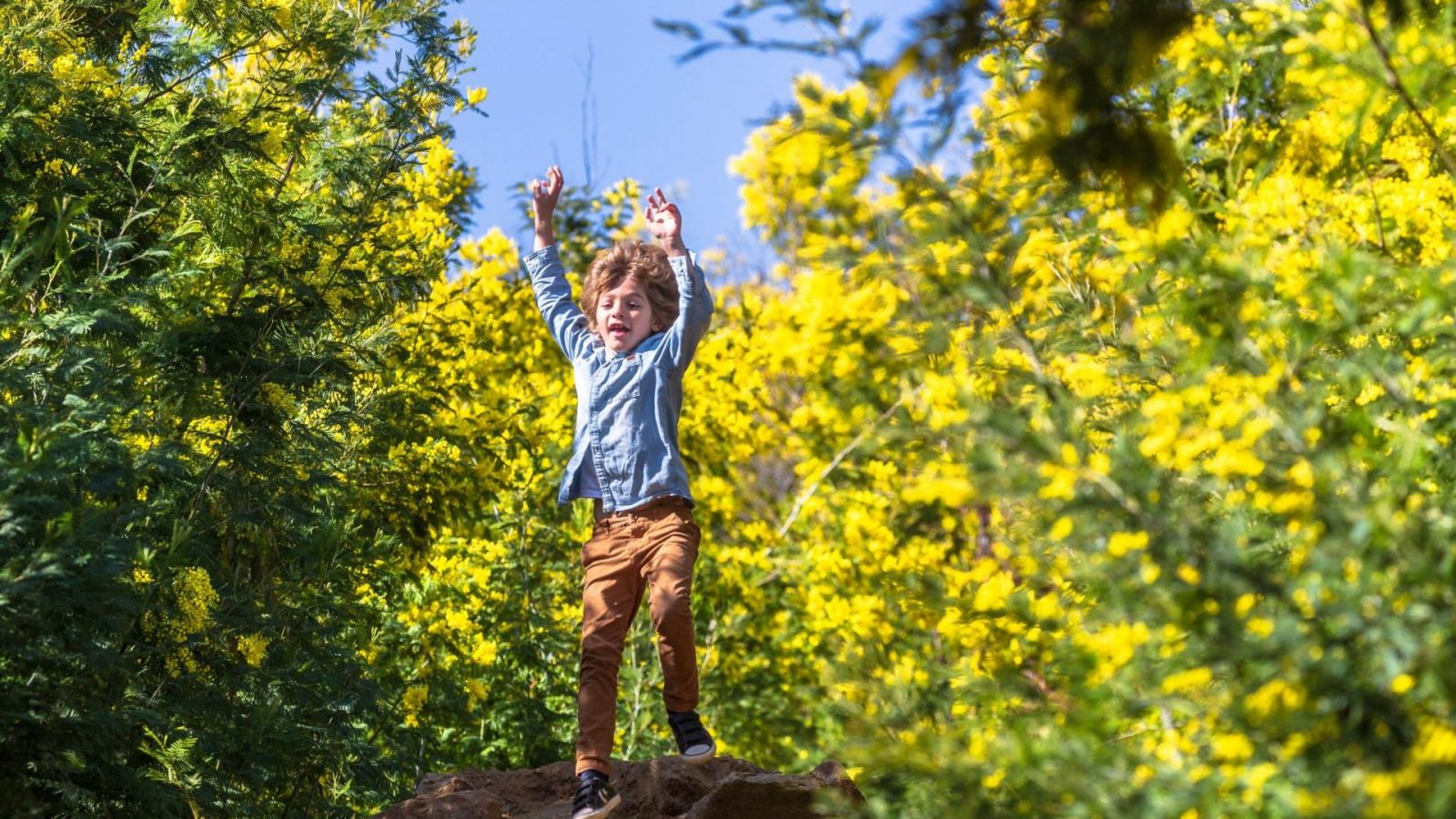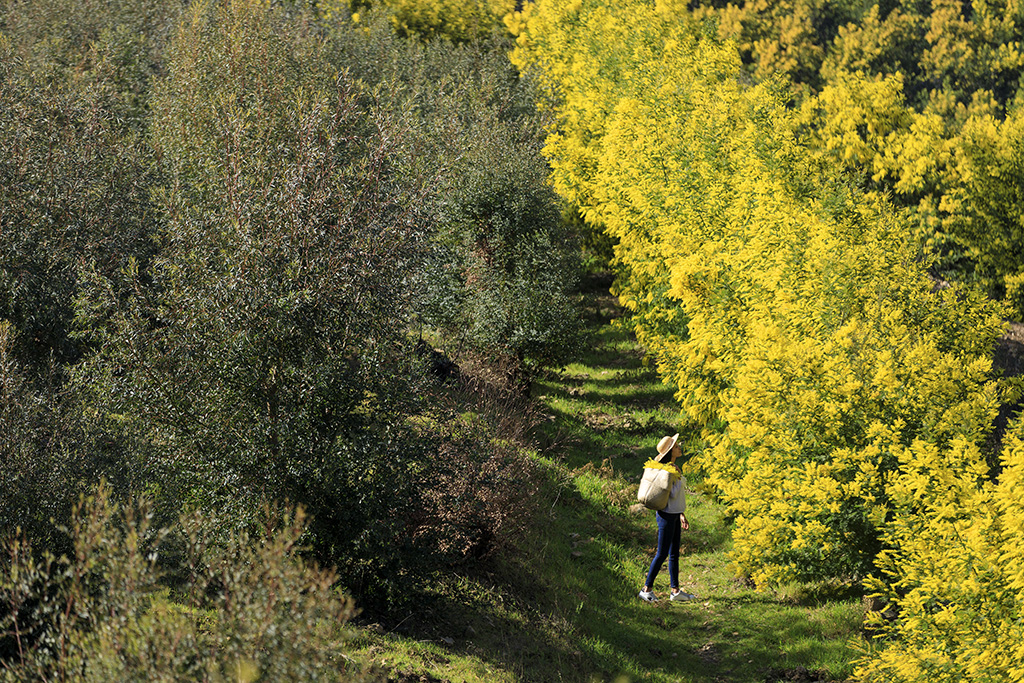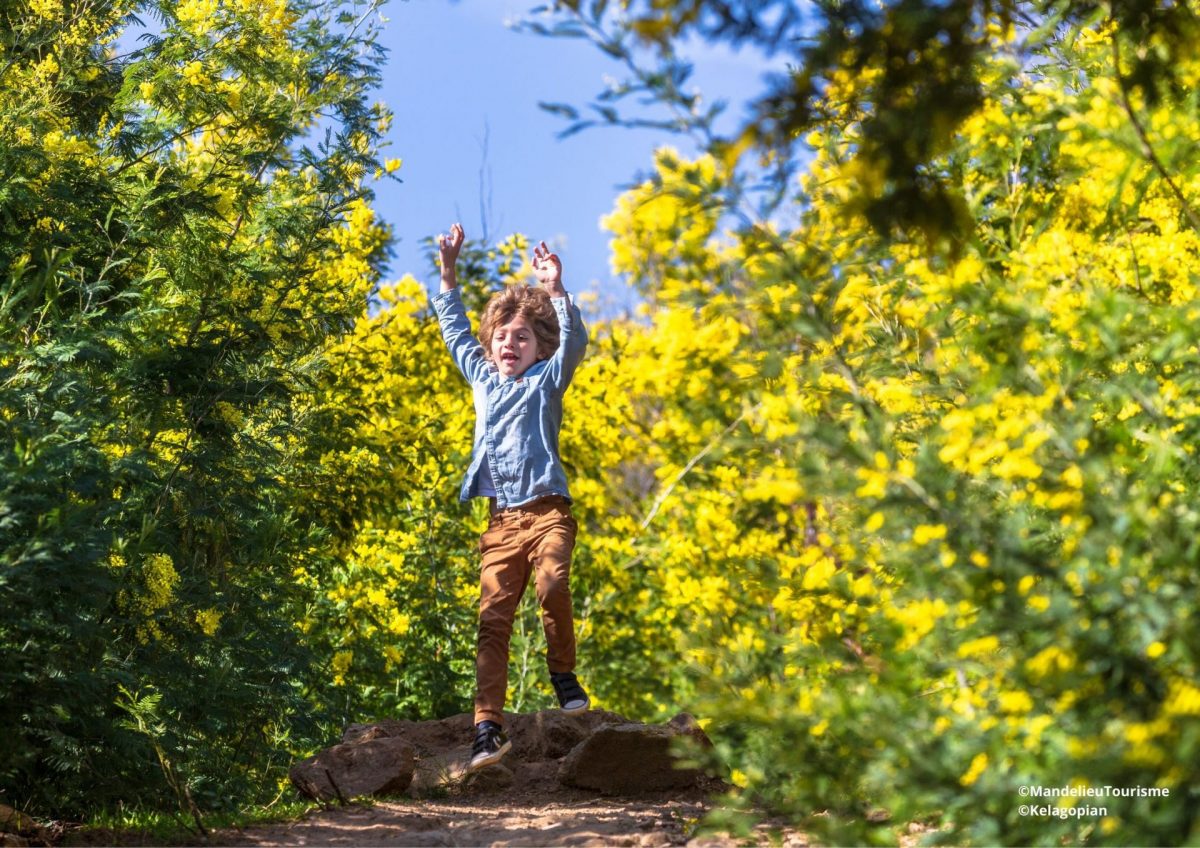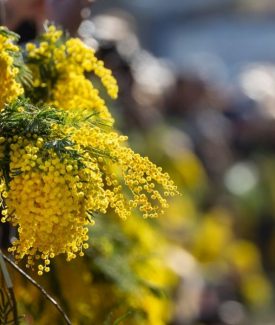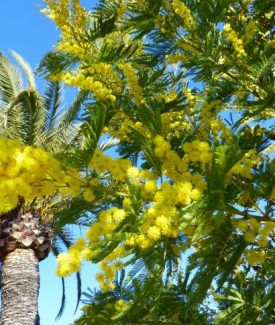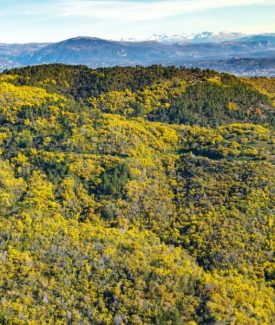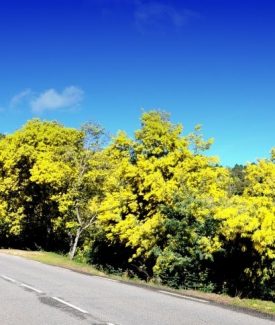Mimosa, a golden tale
Mimosa blossoms light up our winter from January to March. The month of February offers the chance to discover the Côte d’Azur in a completely different way, with unexpected escapades.
February is the month of carnivals and festivals: Citrus Festival in Menton, Carnival of Nice and the traditional Mimosa Festival in Mandelieu-La Napoule.
Historical background
Originally from Australia, mimosa trees were introduced to Europe in the 19th century by English winter visitors. During their voyages, botanists and scientists brought back various species of trees and flowers from this largely unexplored land, including the famous mimosa.
A chosen land for the Mimosa
The nature of the soil and climatic conditions here were ideal for the acclimation of mimosa trees. This very prolific species soon invaded the hills of Mandelieu, from the Tanneron Massif to La Croix des Gardes. The first mimosa trees were planted on Capitou Hill under the aegis of the famous botanist and researcher Gilbert Nabonnand.
An economic boom thanks to Mimosa
Until then, local growers had focused on perfume plants for the perfumeries of Grasse (rose, jasmine, etc.) but they soon converted to mimosa; this gave rise to the first plantations. Hothouses would also be built, using a method of forcing that would revolutionise the art of growing mimosa. The number of people growing mimosa grew, so much so that, at the start of the 20th century, they numbered 80, almost all on Capitou.
Unfortunately, everything came to a halt with World War I, but production resumed and grew in the 1920s. Markets developed and entire railcars brimming with mimosa left the station in La Napoule every day, headed for northern France and abroad. In February 1929, persistent frost, with temperatures dropping to ‑9°C (16°F) wiped out the plantations. Mimosa growers did not give up and replanted everything. Two years later, with wild mimosa again in bloom, it was possible to celebrate the flowers again…
This gave rise to the first Mimosa Festival!
Alas! World War II, disease, freezing temperatures and forest fires repeatedly destroyed plantations, forcing growers to start again from nothing. Many gave up. Today, four families continue growing mimosa on Capitou: the Cometti, Oggero, Pelazza and Courrin families.
Capitou is also famous for basketry. Mimosa growers asked local craftspersons to create cane and wicker baskets. The growers’ demand became so great that the basket makers decided to settle in Mandelieu, precisely on Capitou.
The flower becomes the symbol of Mandelieu-la Napoule. The Mimosa and the basket makers have thus largely contributed to the local economic development. The flower is thus celebrated every year, with the Mimosa festival which has continued to grow in importance.
